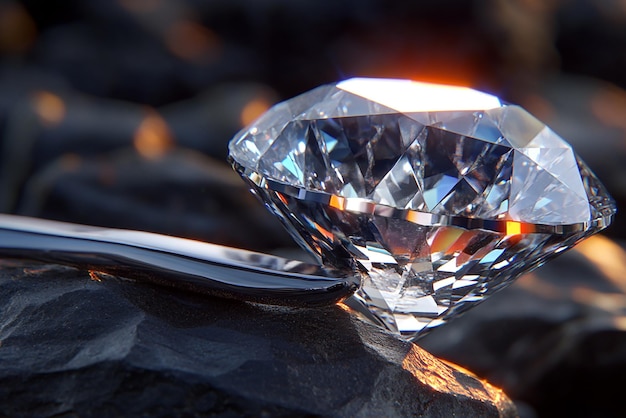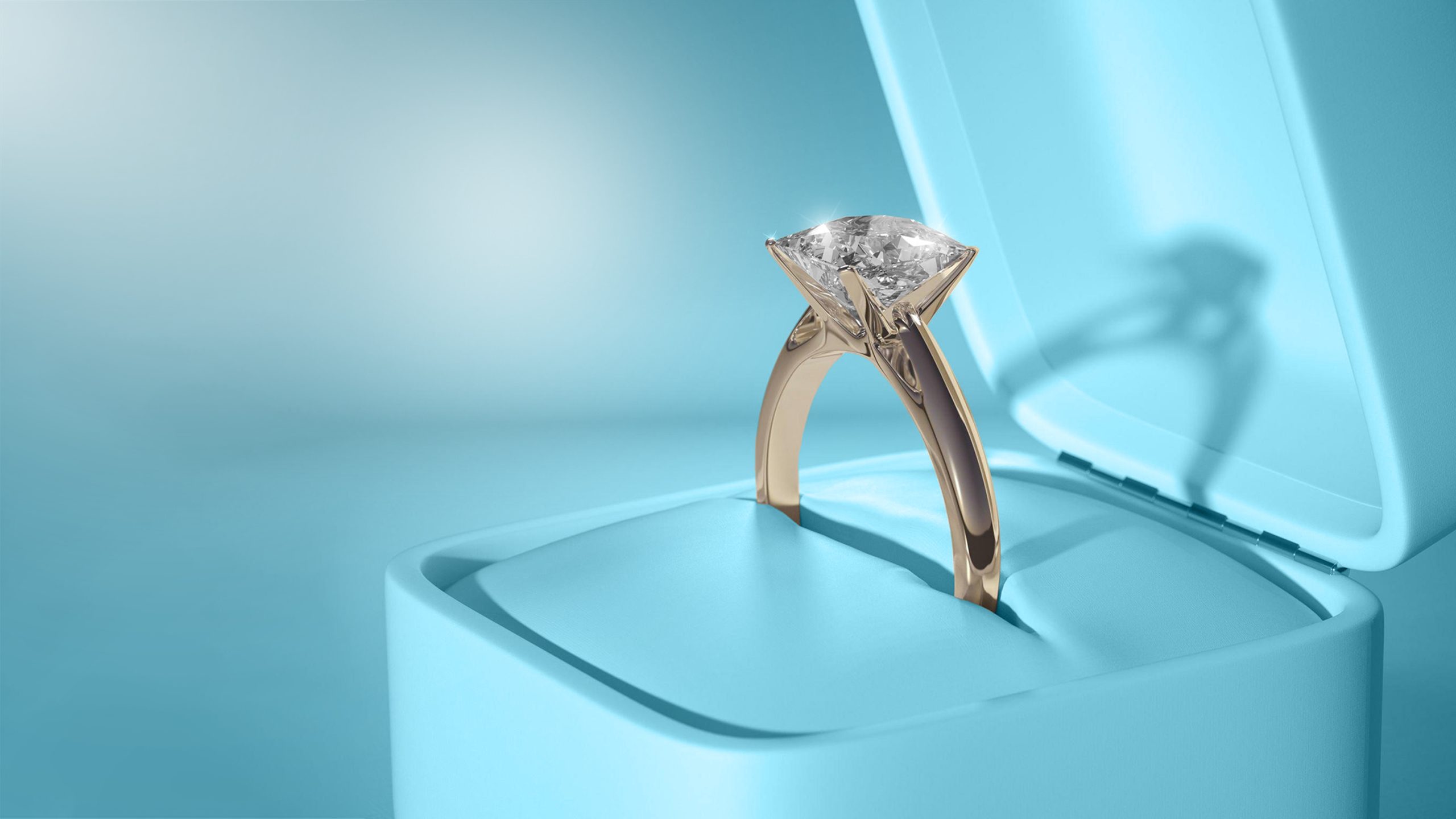In the realm of lab-grown diamonds, grasping the 4Cs — cut, clearness, variety, and carat weight — is principal for making an educated buy. These models, laid out by the Gemological Establishment of America (GIA), are generally perceived as the norm for assessing diamond quality. In this article, we will dive profoundly into every perspective, giving an exhaustive comprehension of how these components add to the general worth and excellence of 4Cs lab diamonds.
Cut: The Specialty of Creating Brightness
The cut of a diamond isn’t only its shape yet alludes to how well a diamond’s features collaborate with light. This perspective is significant in deciding the radiance and splendor of a lab-grown diamond. A diamond’s cut grade is surveyed in light of the accuracy of its points, extents, evenness, and clean. The nature of the cut straightforwardly influences the diamond’s capacity to mirror light, consequently affecting its splendor, fire, and sparkle.
A very much cut lab diamond will show an entrancing play of light, drawing the eye with its enamoring brightness. The most pursued cuts incorporate round splendid, princess, emerald, pad, oval, marquise, pear, asscher, brilliant, and heart shapes. Each cut has its one of a kind allure and can essentially impact the general appearance and character of the diamond.
For example, a round splendid cut is known for its ideal light reflection, pursuing it the most famous decision for engagement rings. Then again, an emerald cut stresses lucidity over brightness, with enormous open features make a lobby of-mirrors impact. The cut is the main part of the 4Cs impacted by human expertise, making it a significant calculate deciding a diamond’s general magnificence.
Clearness: The Diamond’s Virtue
Clearness alludes to the presence of inward or outside qualities, known as incorporations and flaws, individually. These defects can influence the diamond’s appearance and worth. In lab-grown diamonds, considerations are normally less common than in their regular partners, because of the controlled climate where they are made. Be that as it may, clearness actually shifts among lab diamonds and is reviewed on a scale going from Faultless (FL) to Included (I).
A Perfect (FL) diamond has no considerations or imperfections noticeable under 10x amplification, making it incredibly interesting and important. On the opposite finish of the range, an Included (I) diamond contains considerations that might be noticeable to the unaided eye, possibly influencing its splendor and strength. Between these limits lie grades, for example, Inside Perfect (IF), Extremely Marginally Included (VVS1 and VVS2), Somewhat Included (VS1 and VS2), and Somewhat Included (SI1 and SI2).
While choosing a lab diamond, clearness ought to be viewed as close by different variables. While a higher clearness grade upgrades a diamond’s virtue and extraordinariness, many incorporations are minute and don’t influence the diamond’s visual enticement for the independent eye. In this way, picking a diamond with an equilibrium between lucidity and different properties is fundamental.
Variety: The Unpretentious Range
Variety in diamonds alludes to the presence of any shade, with the most significant diamonds being those with the least tone. The GIA variety scale goes from D (totally dry) to Z (light yellow or brown). On account of lab-grown diamonds, a similar reviewing framework applies, and diamonds are assessed in view of their dreariness.
A D-variety diamond is especially uncommon and profoundly valued for its outright drabness, bringing about an unadulterated, frigid appearance. Diamonds reviewed E and F are additionally thought to be dry, showing no observable tint to the undeveloped eye. As we drop down the scale, diamonds show expanding levels of variety, with G-J considered close to dismal, K-M having faint tone, and N-Z displaying recognizable variety.
The variety grade of a lab diamond can fundamentally influence its general look and cost. While vapid diamonds are desired for their unique case and virtue, diamonds with unobtrusive variety can offer novel warmth and character. It’s vital to consider individual inclination and the setting in which the diamond will be set, as specific settings can either improve or decrease the view of variety.
Carat Weight: The Proportion of Size
Carat weight is the unit of estimation used to portray the heaviness of a diamond. One carat is comparable to 200 milligrams. This trademark is frequently connected with the size of the diamond, yet it doesn’t exclusively decide the diamond’s actual aspects. The cut and shape likewise assume critical parts in how huge a diamond shows up.
In the domain of lab-grown diamonds, carat weight is a basic calculate deciding worth. Bigger diamonds are more extraordinary and along these lines more costly. In any case, the expense can shift essentially contingent upon the mix of the other 4Cs. For instance, a high-carat diamond with lower lucidity and variety grades might be more affordable than a more modest diamond with outstanding clearness and variety.
While considering carat weight, offsetting size with quality is fundamental. A very much cut diamond with a lower carat weight can show up more critical and more splendid than an ineffectively cut diamond with a higher carat weight. Subsequently, understanding how carat weight cooperates with the other 4Cs is critical for making an educated buy.
The Benefits of Lab-Grown Diamonds
Lab-grown diamonds offer a few benefits over regular diamonds. They are more reasonable, frequently costing 30-40% not exactly their regular partners of a similar quality. This cost distinction permits customers to buy bigger or more excellent diamonds for a similar financial plan. Additionally, lab-grown diamonds are morally obtained, as they don’t include the ecological and human freedoms issues related with some regular diamond mining rehearses.
One more critical advantage is the capacity to redo lab-grown diamonds to explicit inclinations. Since they are established in a controlled climate, creating diamonds with wanted qualities, for example, one of a kind tones or outstanding clarity is simpler. This customization likely opens up a universe of opportunities for making customized and significant gems pieces.
Conclusion: Picking the Ideal Lab-Grown Diamond
Understanding the 4Cs of lab-grown diamonds — cut, lucidity, variety, and carat weight — is fundamental for making an educated and certain buy. Every perspective assumes an essential part in deciding the diamond’s general excellence, quality, and worth. Via cautiously considering these variables and focusing on private inclinations, purchasers can find the ideal lab-grown diamond that addresses their issues and wants.









